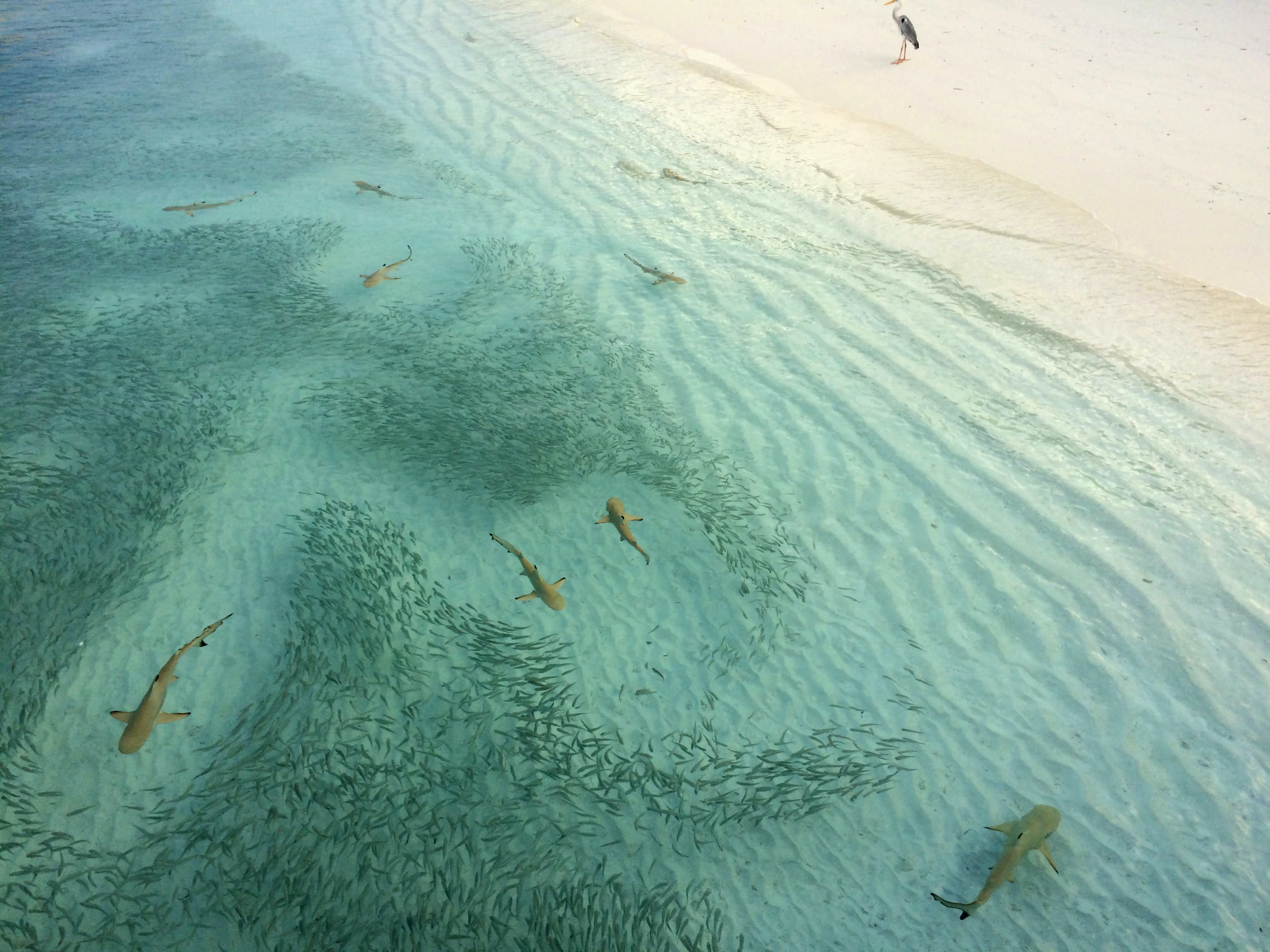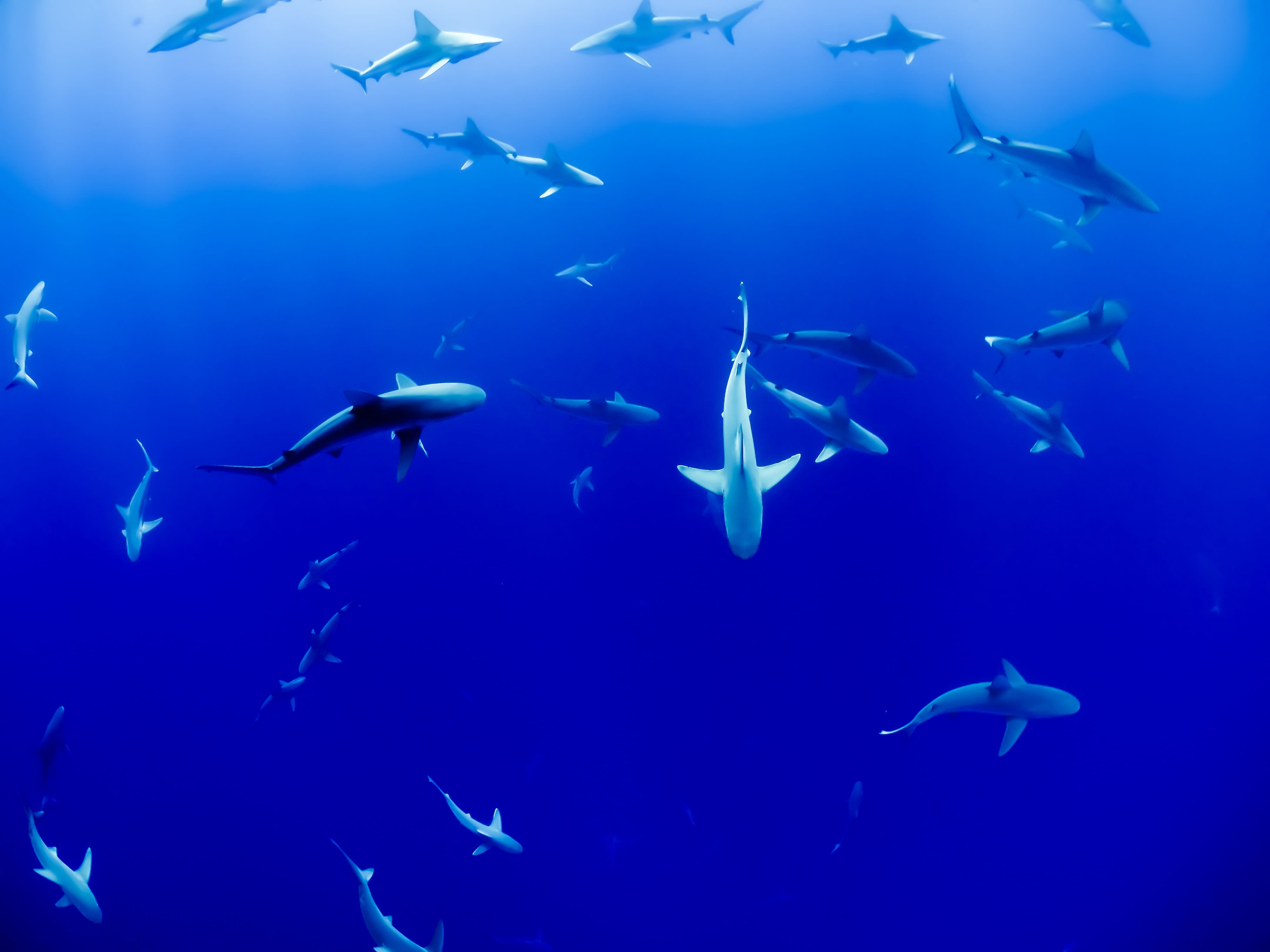Shark Week 2022
Sink Your Teeth Into All Things Shark

Are you ready for some jawsome content you can sink your teeth into? #SharkWeek2022 may be over, but in the ocean, shark week is every week!
Sharks are a highly diverse, ancient, and crucial marine group. Although they are all unique, they all play an important role in the ocean ecosystem.
Sharks can be found in every ocean and even in some freshwater. Some sharks live in the deep-sea, some in the shallows, and others migrate hundreds of miles across the open ocean. Three shark species are giant filter feeders, while many others are highly effective predators.
Sharks are found in the class Chondrichthyes which includes fish that have skeletons primarily composed of cartilage. They're closely related to rays, skates and chimaera. There are more than 500 species of sharks divided into eight extant orders.
Scroll down to learn about the important parts of a shark, shark orders, shark facts and fiction, and more!

Get to Know Your Shark
Scroll through to learn the most important parts of the shark.
Dorsal Fin
The iconic dorsal fin stabilizes the shark and keeps it from rolling.
Gill Slits
Sharks breathe through their gills. Most species have 5 gill slits, but more primitive species have 6 to 7.
Ampullae of Lorenzini
Sharks have a sixth sense that secures their spot as the top predator of the ocean. The ampullae of Lorezini is a network of hundreds of pores around the shark's nose and mouth. Each gel-filled pore contains nerves that can sense tiny electrical pulses. This means sharks can actually sense their prey's muscle contractions and heartbeats.
Dermal Denticles
Sharks don't have true scales. They have something called dermal denticles which translates to "skin teeth." The v-shaped denticles make the shark extra hydrodynamic and protected. They also make a shark feel like sandpaper if you brush toward their head.
Countershading and Camouflage
Many sharks use countershading as camouflage. They have light bellies for fish looking up towards the sun, and dark backs for fish looking down to the deep. Some sharks have different colors and patterns to camouflage with their habitat.
Caudal Fin
Another important fin for the shark is their caudal fin. The caudal fin propels their powerful swimming. Some caudal fins have other functions like the thrasher shark's which is used to slash prey.
One Big Sharky Family

Carchariniformes
Ground Sharks

Heterodontiformes
Bullhead Sharks

Hexanchiformes
Cow Sharks

Lamniformes
Mackerel Sharks

Orectolobiformes
Carpet Sharks

Pristiophoriformes
Sawsharks

Squaliformes
Dogfish Sharks

Squatiniformes
Angel Sharks
Sharks: Sorting Fact From Fiction
Sharks are guaranteed to get a reaction, whether it's fear or fascination. Many mysteries swirl around these top predators. Read on as TXSG Fisheries Specialist Alexis Sabine sorts shark facts from fiction.

Fact
1. Sharks may bite people because they look like seals.
This is true! Surfers on surfboards can resemble seals or sea lions, which can appear to be an attractive food source to sharks. Sharks may take a “test bite” out of a surfer or swimmer to test whether they are the food they are seeking. In most cases, when the shark realizes that they have not in fact bitten a seal, they will leave the human alone.

Fiction
2. Sharks are out for blood and will always attack humans.
This is false! Most species of sharks are small, harmless, and have small teeth. Most unprovoked shark bites occur when a shark is testing to see if the person is a food source (for example, seals or sea lions). Typically when this happens, the shark realizes that this was a case of mistaken identity and will move on, which is why these encounters are more accurately called shark “bites” rather than “attacks.” Though it may be difficult, it is best to remain calm if you see a shark to avoid this situation.
Another thing you can do is avoid putting yourself in situations where a shark might feel threatened. For example, do not attempt to touch sharks if you encounter them when SCUBA diving, snorkeling, swimming, surfing, or fishing.

Fact
3. Lightning kills more people than sharks each year in the United States.
This is true! According to National Geographic and the Florida Museum of Natural History, in the U.S., there is an average of 19 shark attacks per year, with only one fatality every one to two years. In comparison, lightning strikes kill an average of 38 people annually in the coastal U.S. People falling in holes on the beach, bicycle accidents, and other animals like bears and alligators also kill more people annually than sharks do. Interestingly, it was documented that the number of humans that suffered bites from other humans in New York City was greater than the number of humans that were injured by sharks in the entire U.S.

Fiction
4. Oceans are “shark-infested.”
This is false! It is inaccurate to call waters “shark-infested.” Open oceans and coastal waters alike are natural habitats for a variety of shark species. These waters are their home, and the sharks are just living their lives. Calling waters shark-infested spreads fear and can prevent many people from ever learning how to swim or participating in water-based activities because they think the threat of being bitten by a shark is much greater than it actually is. Education is key!

Fiction
5. Shark attacks are on the rise/more shark sightings are occurring.
This is false! Numbers of documented shark bites, encounters, and sightings have risen due to more people participating in ocean-based activities, such as boating, swimming, fishing, and other water sports. This does not mean that there are more sharks, just that more people are around to witness a shark’s presence due to the rise in popularity of aquatic recreation.

It’s important to educate yourself and others on shark facts and fiction to reverse the stigma around these apex predators. Sharks are vital to healthy ocean ecosystems because of their spot at the top of the food chain. They balance the ecosystem by regulating prey densities and ensuring biodiversity.
According to the IUCN Red List of Threatened Species, it is now estimated that over one-third of shark species are threatened with extinction. Help maintain the vibrancy of the ocean by spreading your shark knowledge and turning the tide of shark conservation.